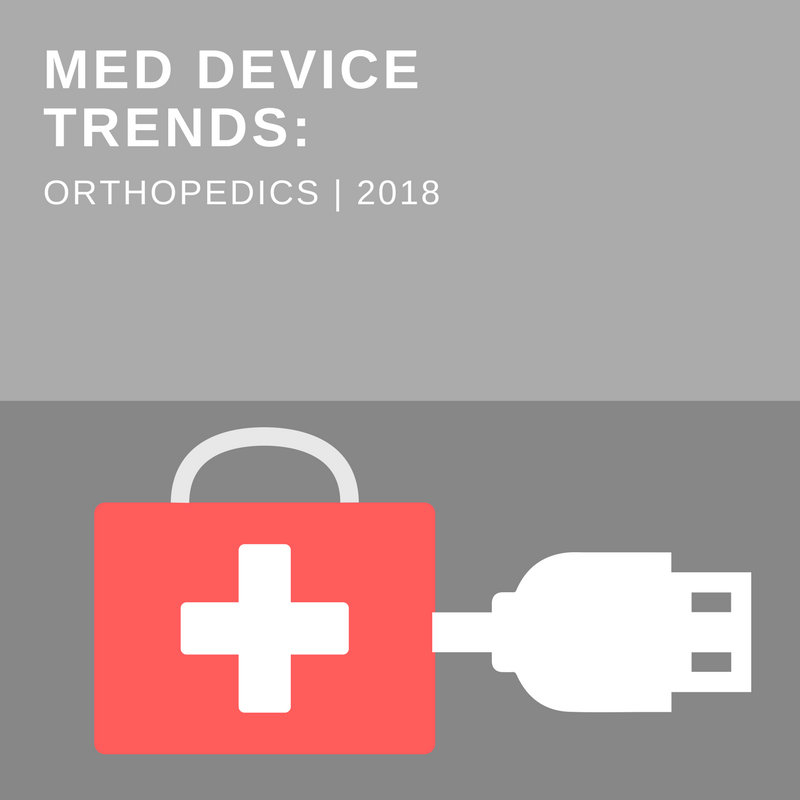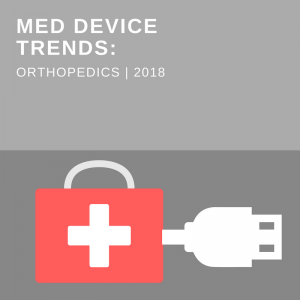Improving patient care has to be at the heart of any medtech innovation and is ideally the cornerstone of any medical device marketing strategy. The WHO has determined that any innovation in orthopedics that does not reduce long-term failure rates by at least 50% isn’t worth using—making it crystal clear that if it’s better for patients it will be more cost-effective in the long run. Slight improvements are not good enough. The future of technology in orthopedics lies in real innovation and real quality.
Big Data
The way these giant leaps of innovation are going to occur is through the use of Big Data. With the ability to collect more information than ever on more patients than ever, clinical studies will become cheaper, faster, and more accurate. With a lower barrier to development, the less effective pieces of technology will be quickly weeded out, and the best solutions will be able to reach the market faster.
Robotics
Robotic-assisted surgery has unlimited potential right now to improve patient outcomes, but because of the high cost of the equipment, only high-volume centers will see a benefit to their patient outcomes and bottom line in 2018. As the technology continues to be adopted and the price goes down, lower volume centers will begin to offer robotic-assisted surgery for knee and hip surgeries.
Outpatient
The technological advancements made in the field mean that it is now possible to perform joint replacement surgeries on an outpatient basis, and much has been made of the potential loss of hospital revenue that could result from this shift. Yes, the CMS reimbursement for outpatient joint replacement surgery has been set at a lower rate than for inpatient for 2018. However, the outpatient surgery option presents opportunities to increase patient satisfaction rates and and reduce HAI rates, two important factors in the determination of overall hospital reimbursement.
As orthopedic surgical technology continues to improve, hospitals will have to adapt to this increasingly complex equation. On the operational side, they’ll need to start leveraging their own data to increase efficiency and improve patient outcomes in order to maintain their financial edge. On the marketing side, they’ll need to embrace their role as arbiters of good health, as Mt. Sinai hospital did in this 2015 New York Times ad with the headline, “If our beds are filled, it means we’ve failed.”
AR/VR: More than a marketing tool
Marketing medical devices via Augmented Reality (AR) and Virtual Reality (VR) is a little different than with traditional marketing—AR and VR represent an enormous segment of the healthcare market in their own right. VR is already being used in orthopedic surgical training to improve technical skills. A company called Touch Surgery just secured funding for the launch of their holographic surgery headsets. And there is mounting evidence that AR and VR can be effective in the treatment of phantom limb pain. AR and VR are quickly becoming standard tools of the trade, which sets healthcare apart from the culture-at-large which employs these technologies mainly for games, entertainment, or experiential marketing. The difference in the orthopedics device space is that the expectation will be for a hands-on experience that demonstrates the product with a very authentic true-to-life feel. Orthopedic surgeons are avid enthusiasts for their tools, so an AR/VR experience is going to be a powerful way to showcase new products to this group.
What does it mean for the marketer?
If you’re marketing a medical device used in the field of orthopedics, what does this mean for you? It means that with the market now shifting faster than ever, your strategy needs to be able to do the same. Are you prepared for every possible scenario? Is there a back-up plan? And most importantly, how are you using big data to optimize your marketing efforts? If you’re having trouble answering these questions, then start by downloading our guide, Defining your Brand’s Strategic Quotient (SQ) to learn how to navigate the fast-paced and highly competitive medtech landscape in 2018.

REFERENCES:
Aïm F, Lonjon G, Hannouche D, Nizard R. Effectiveness of virtual reality training in orthopedic surgery. Arthoscopy. 2016 Jan;32(1):224-32. doi: 10.1016/j.arthro.2015.07.023. Epub 2015 Sep 26. Accessed: https://www.ncbi.nlm.nih.gov/pubmed/26412672
Burnham JM, Meta F, Lizzio V, Makhni EC, Bozi KJ. Technology assessment and cost-effectiveness in orthopedics: how to measure outcomes and deliver value in a constantly changing healthcare environment. Curr Rev Musculoskelet Med. 2017 Jun; 10(2): 233–239. Published online 2017 Apr 19. doi: 10.1007/s12178-017-9407-6 Accessed: https://www.ncbi.nlm.nih.gov/pmc/articles/PMC5435638/
Carlson B. Virtual reality in healthcare – nearly a billion-dollar U.S. market. Kalorama Information. https://www.kaloramainformation.com/Content/Blog/2017/05/16/Virtual-Reality-in-Healthcare—Nearly-a-Billion-Dollar-US-Market
Chang JD, Kim IS, Bhardwaj AM, Ramachandra NB. The evolution of computer-assisted total hip arthroplasty and relevant applications. Hip Pelvis. 2017 Mar; 29(1): 1–14. Published online 2017 Mar 6. doi: 10.5371/hp.2017.29.1.1 Accessed: https://www.ncbi.nlm.nih.gov/pmc/articles/PMC5352720/
Dunn J, Yeo E, Moghaddampour P, Chau B, Humbert S. Virtual and augmented reality in the treatment of phantom limb pain: A literature review. NeuroRehabilitation. 2017;40(4):595-601. doi: 10.3233/NRE-171447.
Field M. Medical startup raises $20m for augmented reality surgery headsets. OrthoFeed. November 7, 2017. https://orthofeed.com/2017/11/07/medical-startup-raises-20m-for-augmented-reality-surgery-headsets/
Helfet DL, Hanson BP, De Faoite D. Big Data: The paradigm shift needed to revolutionize musculoskeletal clinical research. Am J Orthop. 2014 September;43(9):399-400. Accessed: http://www.mdedge.com/amjorthopedics/article/86806/practice-management/big-data-paradigm-shift-needed-revolutionize
Meyer H. Replacing joints faster, cheaper and better? Modern Healthcare. June 4, 2016. http://www.modernhealthcare.com/article/20160604/MAGAZINE/306049986
Meyer H. Hospitals leery of CMS proposal to pay for joint replacements in ASCs. Modern Healthcare. August 5, 2017. http://www.modernhealthcare.com/article/20170805/NEWS/170809931
Mount Sinai ad: http://www.mountsinaihealth.org/static_files/MSHL/Files/2015-Campaign-Our-Beds.pdf
Shah N. The case against hospital beds. Politico. November 8, 2017. https://www.politico.com/agenda/story/2017/11/08/the-case-against-hospital-beds-000575






